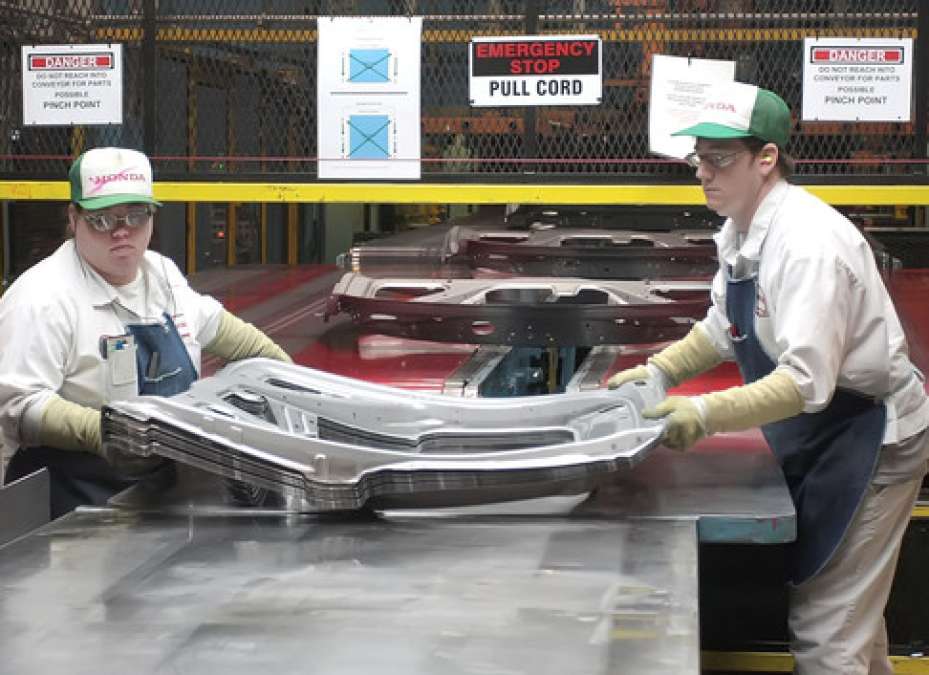The announcement Thursday from Honda's headquarters in California underscores the Japanese company's "Green Factory" initiative in North America. The plan is to be as environmentally friendly as possible.
"This is an important achievement and a tremendous reflection on the commitment and continuous effort of Honda associates throughout our company over the past 10 years to reduce waste from Honda's production operations," said Karen Heyob, a Honda executive who is responsible for the marque's green factory initiatives in North America.
"This is an even more significant achievement when you consider that we also produce in North America the engines and transmissions that power our products."
The first place to achieve perfect status was Honda Manufacturing of Alabama in 2001. The Honda plant in in Lincoln, Ala., set an industry-leading trend with this accomplishment a decade ago. Honda Manufacturing of Indiana, in the Midwestern community of Greensburg, launched in 2008 as a zero-waste-to-landfill plant.
Among all of its 14 plants in the United States and Canada, Honda at present sends a negligible amount of plant waste to landfills: less than one-half of 1%. Remaining waste is recycled or used for energy recovery.
Waste sent to landfills has been dramatically reduced at Honda auto plants throughout North America — from 62.8 pounds of industrial waste to landfills for every car and truck produced in the fiscal year ended March 31, 2001, to 1.8 pounds per automobile in the current fiscal year 2012, according to a statement from American Honda released Thursday.
Since the establishment of zero-waste-to-landfill production in Alabama, Honda has undertaken a major initiative at all of its plants to eliminate as much landfill waste as possible. To understand what comprised each plant's landfill waste, Honda associates went "Dumpster diving," looking at the composition of the waste material resulting from all of its production activities, officials said.
On the basis of these findings and subsequent investigations, Honda identified and implemented waste-reduction and waste-recycling initiatives. These initiatives have ranged from the reduction of metal scrap in stamping processes to improved parts packaging for ease of recycling, to the minimization of paper and plastic waste from cafeterias, officials said. These efforts have prevented 4.4 billion pounds of waste material from being sent to landfills. According to Honda estimates, this is essentially the same amount of household waste produced by about 3 million Americans in one year.
"There are hundreds of stories of associate innovation and challenging spirit that add up to this significant advancement in our commitment to more environmentally responsible manufacturing," Heyob said. "And while it is an important milestone, it is not the end of the race for Honda, as we continue to work to eliminate waste, improve energy efficiency and reduce the total environmental footprint of producing Honda products in North America."
Eight examples of Honda's waste-reduction initiatives, according to Thursday's company statement, include:
1. Engine plants in Ohio, Alabama and Canada are reusing virtually all leftover sand from aluminum and ferrous metal casting operations. In 2010, the three plants recycled 9,400 tons of sand, which is used as mulch and landscaping material, and in concrete products.
2. No steel scrap from North American manufacturing operations has been going to landfills. In one example of Honda's effort to reduce steel scrap, in 2009, the Marysville Auto Plant initiated a program to reduce the amount of offal by reducing the size of steel sheets used to stamp new body parts.
3. The program, which significantly reduces the environmental impact of transporting and recycling the steel, is now being adopted by other Honda factories in North America, including the Canada, Indiana and East Liberty, Ohio, auto plants, and is being considered by other Honda plants around the world.
4. In 2008, Honda Power Equipment in Swepsonville, N.C., initiated a closed-loop system for recycling aluminum scrap from the machining trimming process, melting the scrap into ingots that are recycled into die-cast operations.
5. The East Liberty plant built a recycling bin for bolts, other unused fasteners and parts packaging, enabling the factory to recycle more than 22 tons of steel each year.
6. Within the past year, all four Honda plants in Ohio completed their initiative to eliminate more than 500 metric tons of cafeteria waste produced per year. The plants joined with other Honda plants in North America in transitioning to washable dishware and to disposing of solid waste through composting, recycling and energy recovery.
7. The Timmonsville, S.C., powersports plant, which produces all-terrain vehicles, recycles hard plastic foam, sheet plastic foam and other recyclable plastics from incoming parts shipments, diverting more than 130 tons of plastic from landfills each year.
8. The Marysville and East Liberty plants also recently began washing and reusing thousands of plastic caps each day that are used to protect parts during shipping.
The only two remaining landfill waste streams in all of Honda's North American production activities are at plants in Mexico and in Ohio.
You can reach TorqueNews.com's Hawke Fracassa at [email protected].
Image source: Honda





